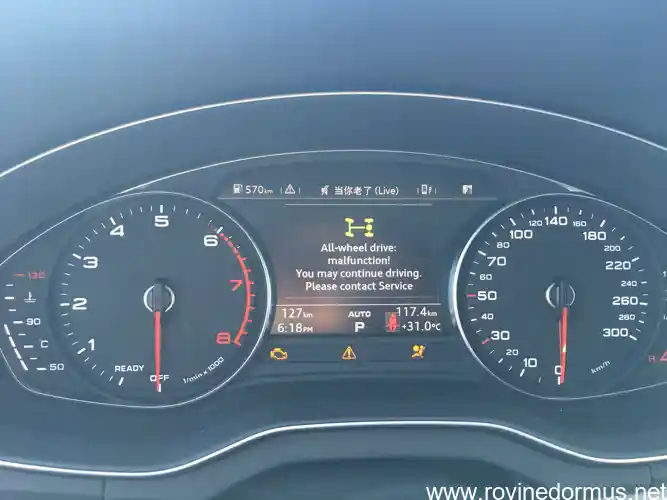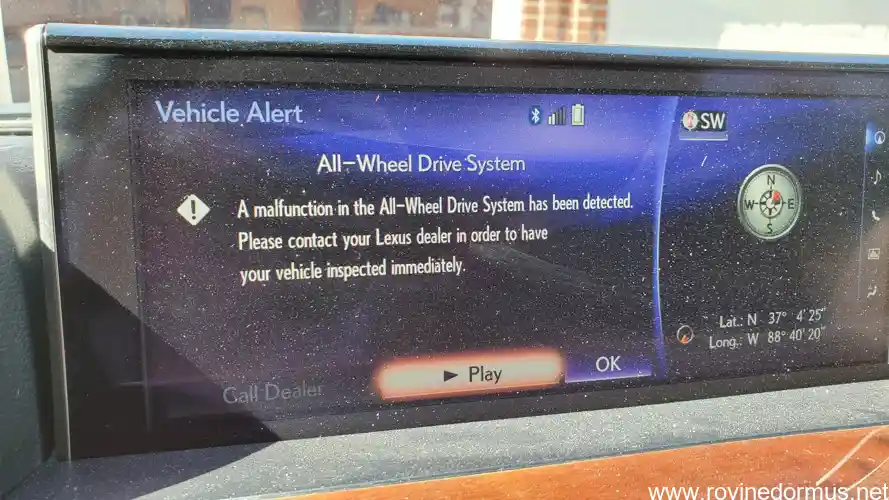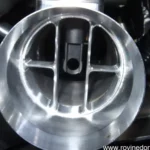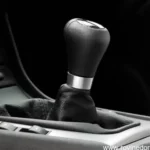All-wheel drive (AWD) systems play a crucial role in enhancing vehicle performance, particularly in challenging driving conditions. However, these systems can encounter malfunctions, impacting the vehicle’s stability, handling, and overall safety. Understanding the causes, consequences, and troubleshooting techniques for AWD malfunctions is essential for drivers to maintain optimal vehicle performance. This blog post provides a comprehensive guide to understanding AWD malfunctions, including their symptoms, causes, repair solutions, maintenance tips, and advanced technologies that optimize AWD functionality. By delving into these topics, readers will gain valuable insights into ensuring the可靠性, durability, and optimal performance of their AWD systems.
Understanding All-Wheel Drive Malfunction: Causes and Consequences

Understanding All-Wheel Drive Malfunction: Causes and ConsequencesAll-wheel drive (AWD) systems are designed to enhance traction, stability, and handling in various driving conditions. However, like any complex mechanical system, AWD can experience malfunctions that can affect its performance and safety. As an informed vehicle owner, it’s crucial to recognize the potential causes and consequences of AWD malfunctions. By understanding the symptoms, you can take prompt action to diagnose the issue and prevent further damage or safety hazards.
Neglecting AWD issues can compromise your vehicle’s stability, increase the risk of accidents, and lead to costly repairs in the long run. Therefore, it’s essential to address AWD malfunctions promptly to ensure optimal performance and safety on the road.
Diagnosing the Symptoms of an AWD Malfunction
When it comes to your all-wheel drive (AWD) system, ignoring issues can have severe consequences for both your safety and the longevity of your vehicle. A malfunctioning AWD system can compromise your ability to maintain control in slippery or adverse road conditions, increasing the risk of accidents. Prolonged neglect can also lead to more costly repairs down the road. It’s crucial to be aware of the signs and symptoms of an AWD malfunction and address them promptly to ensure your safety and the optimal performance of your vehicle.
By staying informed and taking proactive measures, you can prevent minor issues from escalating into major problems, safeguarding your investment and keeping yourself and your passengers protected on the road.
Safety Implications of Neglecting AWD Issues
Understanding an all-wheel drive malfunction is crucial for maintaining vehicle safety and performance. An AWD system malfunction can manifest in several ways, such as reduced traction, uneven torque distribution, or warning lights on the dashboard. Ignoring these symptoms can have severe consequences, including loss of control, increased wear on tires and components, and compromised handling in adverse road conditions. Therefore, it is essential to diagnose and address any AWD issues promptly to ensure your safety and the optimal performance of your vehicle.
.
Troubleshooting AWD Malfunctions: A Comprehensive Guide

Unveiling the complexities of an all-wheel drive (AWD) malfunction can be a perplexing task. To help you navigate the labyrinth of potential issues, we’ve compiled a comprehensive guide that will empower you to troubleshoot AWD malfunctions like a pro. Delve into the intricacies of electrical system checks, where you’ll become a detective, meticulously inspecting sensors and scrutinizing wiring for any signs of trouble. Then, embark on a mechanical examination, where you’ll don your mechanic’s cap and assess components for telltale signs of wear and damage.
By following our step-by-step approach, you’ll gain the knowledge and confidence to diagnose and resolve AWD malfunctions with surgical precision.
Electrical System Check: Inspecting Sensors and Wiring
When your all-wheel drive (AWD) system malfunctions, it’s like having a car with one foot on the gas and the other on the brakes. It’s an awkward and potentially hazardous situation that needs immediate attention. In this comprehensive guide, we’ll delve into the intricacies of AWD malfunctions, empowering you with the knowledge to diagnose, troubleshoot, and repair these issues with confidence. By understanding the symptoms, assessing the electrical and mechanical components, and exploring expert repair solutions, you’ll become equipped to get your AWD system back in sync and ensure a smooth and controlled driving experience once again.
.
Mechanical Examination: Assessing Components for Wear and Damage
Navigating the intricacies of an AWD malfunction can be akin to solving a complex puzzle. To effectively troubleshoot these issues, a thorough investigation is essential. You’ll need to meticulously examine the electrical system, scrutinizing sensors and wiring for any abnormalities. Additionally, a comprehensive mechanical examination is crucial to assess components for signs of wear, damage, or misalignment.
By methodically following these steps, you can uncover the root cause of your AWD malfunction and restore optimal performance.
Repairing All-Wheel Drive Systems: Expert Solutions

When it comes to repairing all-wheel drive (AWD) systems, expert solutions are crucial for restoring optimal performance. Whether it’s replacing faulty sensors or actuators or troubleshooting and fixing electrical system issues, addressing these malfunctions requires a comprehensive and skilled approach. Experts in AWD repair possess the knowledge and expertise to diagnose the root cause of the malfunction and implement the necessary repairs to get your vehicle back on track. Neglecting AWD issues can lead to further damage and compromise your safety, so it’s important to seek expert assistance at the first sign of trouble.
.
Component Replacement: Replacing Faulty Sensors or Actuators
All-wheel drive malfunctions can be a major inconvenience, especially if you rely on your vehicle for everyday transportation or off-road adventures. Ignoring these issues can lead to further damage and even compromise your safety. It’s important to have a trusted mechanic inspect your vehicle as soon as you suspect a problem. They can accurately diagnose the issue, whether it’s a faulty sensor, a worn component, or an electrical system malfunction.
By addressing these issues promptly, you can restore your vehicle to its optimal performance and prevent more extensive – and expensive – repairs down the road.
Electrical System Repairs: Troubleshooting and Fixing Wiring Issues
Repairing all-wheel drive systems demands specialized knowledge and expertise. If you’re experiencing persistent all-wheel drive malfunctions, it’s crucial to enlist the help of a reputable mechanic who can diagnose the underlying issue and provide tailored solutions. Ignoring these issues can lead to diminished performance, fuel efficiency, and even safety hazards.Suppose you’re familiar with basic automotive repairs and possess the necessary tools and knowledge.
In that case, you may consider troubleshooting the system yourself. However, if you’re not confident in your abilities or the problem appears complex, it’s always advisable to seek professional assistance.
Maintaining All-Wheel Drive Systems for Optimal Performance

Maintaining your all-wheel drive (AWD) system is crucial for optimal performance and longevity. Regular inspections allow you to proactively detect potential issues before they escalate into costly repairs. By visually inspecting components and checking fluid levels, you can identify any wear or leaks that may require attention. Additionally, scheduled fluid changes and component lubrication help extend the lifespan of your AWD system.
Just like a well-maintained vehicle provides a smoother and more efficient ride, a properly maintained AWD system ensures optimal traction, stability, and handling in diverse driving conditions.
Regular Inspections: proactive measures for early detection
Maintaining your all-wheel drive (AWD) system is crucial to ensure optimal performance and longevity. Regular inspections allow you to catch minor issues before they escalate into major breakdowns. Proactive detection and maintenance can save you time, money, and potential safety hazards down the road. Just like taking your car in for regular oil changes and tire rotations, scheduling routine AWD inspections will help keep your vehicle operating smoothly and safely.
.
Fluid Changes and Component Lubrication: Extending AWD Lifespan
Maintaining your all-wheel drive (AWD) system is crucial for optimal performance and longevity. Regular inspections can help you detect potential issues early on, preventing minor problems from escalating into major malfunctions. It’s like keeping an eye on your car’s health, catching potential “colds” before they turn into full-blown “pneumonia.” Fluid changes and component lubrication are equally important.
Think of it as giving your AWD system a regular “oil change and tune-up.” These proactive measures not only extend the lifespan of your AWD components but also ensure a smoother, more efficient driving experience. Just as a well-maintained car runs better and lasts longer, a properly maintained AWD system will keep you confidently navigating various terrains, season after season.
Advanced Technologies in All-Wheel Drive Systems
Advanced technologies are revolutionizing the world of all-wheel drive (AWD) systems, enhancing their capabilities and performance. Electronic traction control, for instance, acts as a safety guardian, constantly monitoring wheel slip and intervening to maintain stability and grip. It’s like having an invisible assistant keeping you on track, especially on slippery or uneven surfaces. Dynamic torque distribution, on the other hand, is the mastermind behind optimizing power delivery to each wheel.
By continuously analyzing driving conditions, it ensures that the right amount of torque is directed to the wheels that need it most. Think of it as a conductor orchestrating a symphony of power, ensuring seamless and efficient performance on any terrain.
Electronic Traction Control: Enhancing Stability and Grip
Advanced technologies are revolutionizing all-wheel drive systems, enhancing their capabilities and performance. Electronic traction control, for instance, acts like a watchful guardian, constantly monitoring wheel slip and intervening to ensure stability and grip, especially on slick or uneven surfaces. It’s like having an invisible safety net, giving you confidence to navigate challenging road conditions with ease. Dynamic torque distribution, on the other hand, is the mastermind behind optimizing power delivery to each wheel, maximizing traction and handling.
Think of it as a conductor orchestrating a symphony of power, seamlessly adjusting torque distribution to suit different driving scenarios, whether it’s tackling a steep incline or navigating a winding road. These advancements in all-wheel drive technology empower you with greater control, enhanced safety, and an overall driving experience that’s both exhilarating and secure. It’s like having a trusty companion by your side, always ready to assist you in conquering any road that comes your way.
Dynamic Torque Distribution: Optimizing power delivery for enhanced performance
The technological advancements in all-wheel drive systems continue to redefine driving experiences, enhancing safety, performance, and efficiency. Electronic traction control, a key feature in modern AWD systems, acts as a vigilant guardian, constantly monitoring wheel slip and intervening seamlessly to maintain stability and grip. Like a skilled dancer, it gracefully adjusts torque distribution, preventing uncontrolled slides and ensuring you stay firmly planted on the road.Dynamic torque distribution, another technological gem, elevates performance to new heights.
It intelligently analyzes driving conditions, seamlessly apportioning power between the front and rear axles. Imagine navigating a winding mountain pass; dynamic torque distribution becomes your co-pilot, optimizing power delivery to each wheel, ensuring you conquer every curve with confidence and precision.
**Q1. What is all-wheel drive malfunction?**
**Ans: All-wheel drive malfunction is a problem with the vehicle’s all-wheel drive system, which can cause the vehicle to lose power or traction.**
**Q2. What are the symptoms of all-wheel drive malfunction?**
**Ans: Symptoms of all-wheel drive malfunction include loss of power, reduced traction, and difficulty turning.**
**Q3. What causes all-wheel drive malfunction?**
**Ans: All-wheel drive malfunction can be caused by a variety of factors, including faulty sensors, worn-out components, or electrical problems.**
**Q4. How can all-wheel drive malfunction be fixed?**
**Ans: All-wheel drive malfunction can be fixed by replacing faulty components, repairing electrical problems, or resetting the vehicle’s computer.**
**Q5. Can I drive my vehicle with all-wheel drive malfunction?**
**Ans: It is not advisable to drive your vehicle with all-wheel drive malfunction, as it can be dangerous.**
**Q6. How much does it cost to fix all-wheel drive malfunction?**
**Ans: The cost to fix all-wheel drive malfunction can vary depending on the severity of the problem and the make and model of the vehicle.**

I am article writer and Associate at Kirkland & Ellis.






Leave a Reply